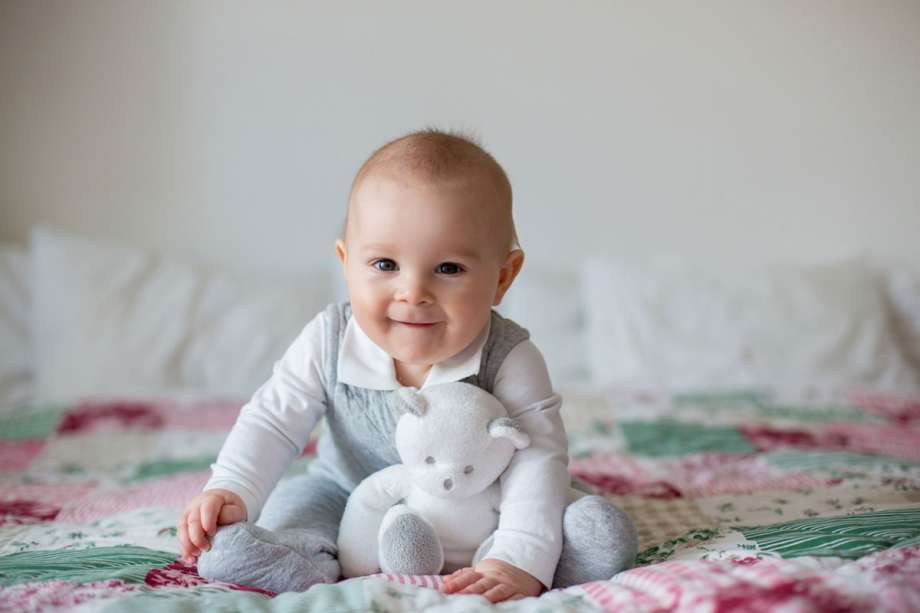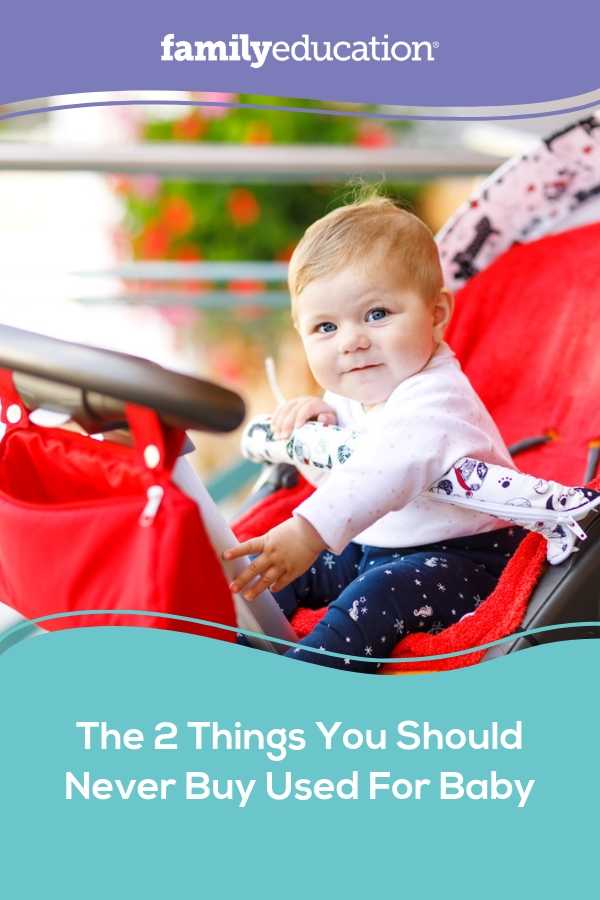Buying Used for Baby: What’s Okay and What’s Not

Today, buying items online can be done in just a few clicks and while it might seem tempting to save a few bucks by purchasing used items for your baby, is that always the best and safest option?
You Should Never Buy These Baby Items Used

While the list is short, the reasoning behind these no’s is largely due to safety concerns:
- Cribs: Cribs can be one of the higher ticket items you’ll purchase for your newborn, but it’s for a reason. In 2011, five federal requirements were put into law to maintain a higher standard of safety moving forward, but even if the advertised crib was made after 2011, it’s usually best to purchase this new. Similarly, it’s not recommended parents purchase a used crib mattress not only for sanitary reasons (bodily fluids, bed bugs, etc.) but also safety reasons as mattresses can degrade with age.
- Car Seats: In many cases, it is not recommended to purchase a used car seat, as the materials used can degrade overtime, in addition to most only having an expiration date of six to eight years from purchase. Depending on how old the car seat is, it may not make sense to purchase it used instead of new, which could be considered a long term investment depending on the adaptability of the seat as your child grows. Additionally, there are new technological advancements being put onto the market annually for car seats, which older models likely won’t have. Target’s car seat trade-in program is a great option for upgrading car seats. Walmart has one, too!
Maybe Buy These Baby Items Used

Use your best judgement with these items and shop carefully so you don’t purchase something and realize later it was a potential misstep:
- Shoes: Much like clothes, your little one won’t be able to fit into the same shoes for very long as they continue to grow! As long as the shoes are not too worn out, which could potentially give them discomfort, second-hand shoes can be a big money saver.
- Furniture: Aside from the crib, you’ll likely want to outfit the baby’s nursery with furniture including a dresser/changing table, bookshelf, or rocking chair. Save money on these big-ticket items given that they don’t have peeling paint or visible defects. If the seller does not have parts to attach the larger standing pieces to the wall, they can likely be picked up at the manufacturer or a hardware store.
- Strollers: Like cribs, strollers can come with a hefty price tag. But this is another item you may want to consider investing in. Following over 1,300 incidents with strollers between 2008-2013, new federal safety standards were enacted in 2014, so it’s important to ensure any used strollers you’re considering are compliant with these standards.
Baby Items You Can Safely Purchase Used

There are more than a few things which can be safely purchased second-hand or given to you as a hand-me-down, or even passed on from your first child.
- Clothes: This is likely the most obvious acceptable item, because babies grow fairly quickly out of their clothes and keeping up with their growing bodies can be a challenge on a budget. Meghan Slocum, a California-based blogger writes that upcycling is also a great way to reduce clothing waste: “Buying used clothes is good for the environment because you’re making use of clothes that have already been produced. Those clothes don’t have to go to the landfill or be recycled, AND you save on the use of the resources that would be needed to produce new clothes.”
- Toys: Many plastic and wooden toys can hold up over time, and will likely just need to be disinfected before being introduced to your little one. Toys can be pricey over time, and much like clothes, your baby will likely outgrow items quickly. Additionally, it’s impossible to predict what your child will like, so they may not absolutely love the latest and greatest innovation despite the cost and may prefer classic toys.
How To Shop Used for Baby
If you’re going to buy used, here are a few tips to keep in mind while you browse:
Confirm Sale Dates
Many big-ticket baby items go on sale throughout the year, as do clothes with the changing seasons, so keep in mind while you scour online marketplaces you may be able to get a deal just as good through a direct retailer.
Watch out for Defective Items
Unfortunately, there may be people out there who are looking to pass off damaged goods as sellable which could endanger your child. Thoroughly inspect everything before making a purchase if you’re picking it up in person. Purchasing an item with the original instruction manual is also a bonus should something pop up in the future.
Keep Warranties in Mind
As for warranties, they may not be applicable depending on what you’re purchasing, so should you run into trouble down the road, you may not be able to get a replacement. Additionally, you can search for any recalls online with the model number or product name to ensure you won’t run into any future problems.
Shop Around
Don’t purchase the first supposed good deal you see, and search around for what the same or similar items are being priced at in other apps or by other sellers, as well as through direct retailers.
Where to Shop
As for where to shop, Stephanie Helie, a mother and Massachusetts-based blogger and FamilyEducation Expert shares two of her favorites: “A couple great places to look for secondhand baby items are Kidizen, which is an app where people sell used kids clothes, toys and books. The Facebook Marketplace is another good place, especially for toys.”
Local kid-specific consignment and resale stores in your neighborhood are also a great way to shop, as well as via these websites and apps:
- eBay
- Craigslist
- Poshmark
- thredUP
- Mercari
- OfferUp
Aside from the Facebook Marketplace, purchasing secondhand and gently used kid’s items and clothes through dedicated shopping accounts on Facebook and Instagram can be a great way to save a chunk of change.
For when it comes time for you to sell some of your items, lightly loved or purchased secondhand, Leslie Lambert, a mother-of-two and Mississippi-based blogger shared her tips for creating an Instagram account for selling her daughter’s clothing: “I’ve had some luck with consignment sales, but the best way I’ve found to sell kids’ clothing is on Instagram. My sale page has been an invaluable resource for networking with other moms that buy kids clothing and organizing my stash.”
Happy shopping!

